- Popular Post
-
Posts
1,069 -
Joined
-
Last visited
-
Days Won
13
Posts posted by Ludwig
-
-
Film Music Notes is happy to announce the launch of a new course, Associations of Harmony in Film Themes at the super-sale price of $89 with the use of this coupon code: LEQ2F271SS. After Jan. 3rd, the price will go to the launch price of $99 (full regular price is $109).
By studying many of the greatest themes to come out of Hollywood, this three-lesson course will teach you the most common harmonic progressions in Hollywood film music and the emotional and musical associations they tend to have. Learn how to use harmony to evoke the perfect emotions in your themes!
Find out more on the course page, where you can watch a preview, see the course contents, and enroll in the course.
But hurry, the super-sale ends Jan. 3rd! -
19 hours ago, Jay said:
Does anybody want to talk about the NEW THEMES in this score?
Sure, I'm game.
So about the Sad Theme, one thing about it is that in the suite, it gets combined in counterpoint with the main theme at 6:26, kind of like Williams' Rey's theme + Force theme combination in the end credits of TFA. Okay, so Giacchino does change the notes of the main theme after its first motif, but what the hey, I still like it.
What I found really striking was the Mysterious Theme - it has exactly the same harmony as the main theme all the way through. You could play the main theme over the chords of the Mysterious Theme and get the same thing. As Jay points out as well, the Mysterious Theme leads into the main theme each time. I would add that this happens yet a third time in the suite starting with the Mysterious Theme at 7:01 then the main theme at 7:19. So the two themes are inextricably intertwined. I don't know anything about the plot of the film, but maybe the Mysterious Theme has something to do with Spidey's identity, that he's questioning who he is, who Spider-Man is, or maybe there's another Spidey? Who knows. But the two themes here are definitely connected to the point where they are in one respect the same. Eager to find out what it means.
-
- Popular Post
- Popular Post
19 minutes ago, Edmilson said:It's really odd to think that Williams' major "breakthrough" (for the lack of a better word) with Jaws and Star Wars happened when he was a middle aged man. In other words, he was already an experienced and well lived composer when he got, well, "famous".
And I think it's somehow better that it happened around that time, bringing together all that life and experience by the time he's given those big assignments.
Actually, with the release of Fiddler, I'm realizing just how important that score was for his career. It was the highest-grossing film of 1971 and received the most Academy Award nominations of any film that year. And that was when Williams was 39, still around the start of middle age. So still a lot of life and experience went into that, and clearly it showed.
-
- Popular Post
- Popular Post
After studying so many of Williams' action cues and looking at this one, it's clear that "Here They Come" doesn't draw on his go-to materials for action writing in any significant way (i.e., octatonic and hexatonic scales). Sure, there are elements of them, of course, but the main vamp of the cue defies any consistent use of a scale or harmonic pattern. And yet it doesn't sound like a patchwork in the least.
It seems that Williams had developed his action style enough even by this time to have a large buffet of options at his disposal. And what comes across is the confidence in being able to harness them without a compositional pattern in mind but simply by blending them into a coherent and distinctive battle-music cue. This, to me, is one of Williams' greatest strengths as a film composer: to be able to take more-or-less common materials (at least for action writing in this case) and shape them into something distinctive. Original while being entirely traditional (for film music) at the same time.
-
-
- Popular Post
- Popular Post
Film Music Notes is happy to announce the next set of lessons for Action-Music Harmony in Classic Blockbuster Films at the launch sale price of $99! Through these lessons, learn the most common harmonies for the two action scales of hexatonic and Hungarian minor. Then see how scales interact with planing harmonies and how octatonic, hexatonic, and Hungarian minor scales combine in sophisticated action music.
Find out more on the courses page, where you can navigate to each group of lessons to see their contents, watch a preview, and enroll in the course.
Hurry, sale ends Oct. 15!- Falstaft, ConorPower and Jurassic Shark
-
 2
2
-
 1
1
-
- Popular Post
- Popular Post
How about the Ludlow Motif?
-
13 hours ago, Sweeping Strings said:
Could've sworn that there was a court case that finally judged Norman to be the composer and Barry the arranger.
Yes, it came up as a result of an interview David Arnold did with Barry before Arnold scored his first Bond film. Barry claimed that he was the composer of the Bond theme. This wasn't the first time he had made such a claim publicly, but The Sunday Times ran a story sensationalizing it. This caused Norman to sue because he his royalties on the theme, according to Burlingame, is often in the hundreds of thousands of pounds each year, and Norman claimed that the Times "rubbished my career".
Anyway, long story short, yes @Sweeping Strings is right. After a very detailed trial, a jury decided in favor of Norman, who remains officially credited for composing the theme to this day. Barry always was considered the arranger, though he wasn't officially credited as such, only his band was credited with the performance.
-
- Popular Post
On 6/28/2021 at 2:19 PM, blondheim said:I really am not familiar with John Barry's work. I couldn't hum a single theme of his off the top of my head, unless you consider the Bond theme his. I would like more information on this. Not that it matters too much but I'm curious.
So a number of years ago, I compiled a couple of quotes on this question and posted the results over on Film Score Monthly. Here's what I wrote:
QuoteThe "B" section of the James Bond Theme was written for "Dr. No" along with the rest of the tune and is usually attributed to John Barry despite the lawsuits won by Monty Norman.
Yes, we'll never know for sure, but it seems to me that Norman had nothing to do with the "James Bond Theme". Norman claimed that Barry simply orchestrated his tune, but Barry tells a different story. Just to give the relevant points in an interview in the book Overtones and Undertones, Barry said:
I received a phone call on a Friday evening from a gentleman called Noel Rogers, who ran United Artists Music in London. And he said , "Look. We've got this movie called Dr. No. It's a James Bond thing." ... Monty Norman had been signed to do the music. ... But they were not happy, and they wanted me to come in the next day to see what we could do. I went in and Monty played this thing. And I then took Noel Rogers out into another room and said, "I can't work with that material. I'm being pretty successful now with what I'm doing, and that doesn't bend into anything close to what we're looking for." But Norman had been signed to do the movie, and they need a main title--two minutes ten, or whatever it was--and they needed it quick, like the following Wednesday. ... And so I wrote the damn thing, went into the studio, recorded it, and then later I stood in line outside the Pavillion in Picadilly on the Sunday that Dr. No. opened, went into the theater, and the goddamned thing's all over the picture!
And as Jeff Smith tells us in The Sounds of Commerce:
Because of their contractual obligations to Norman, though, Saltzman and Broccoli [the film's producers] persuaded Barry to give up his songwriting credit in exchange for the promise of future employment. Norman continues to receive the songwriting credit for the "James Bond Theme".
Ah, the things we'll do to get ahead when we're young!Monty Norman, who is credited with penning the theme, was always adamant that he wrote everything in the theme as we know it, and Barry just helped flesh out the orchestration. But there's also Jon Burlingame's thorough book, The Music of James Bond, which states:
QuoteBarry often said that, apart from the familiar guitar notes of the opening bars, he found little to work with in Norman's material and just made up the rest, including the bass line, the countermelody and the jazz-oriented bridge.
There's much more to read in Burlingame, but you probably get the picture: Barry essentially took Norman's guitar riff (which was from Norman's "Bad Sign, Good Sign") and created what we know as the Bond theme. He never got the credit because he was new to film scoring and agreed to signing away the credit, not knowing it would become one of film history's most successful franchises ever.
Brilliant composer, though. It's great to hear you've taken an interest in his film work. I think he was a master of using harmony as the primary vehicle for emotional expression. I also think this is why his music isn't as texturally complex as others - it allows the harmony to shine through and be the focus of attention. As I say, brilliant.
-
- Popular Post
-
- Popular Post
Just wanted to chime in with my two cents on this score. A number of years ago, a couple of JWFanners and I had a crack at analyzing this score to see how Williams worked atonally. What was interesting to me was that there wasn't any particular "system" he adhered to in the cues. In other words, it wasn't 12-tone music for example, where you take the 12 notes of the chromatic scale, put them in a certain order and use that as your main material. It also wasn't based primarily on any kinds of scales, like octatonic for example.
Instead, it seemed to use small chords of 3 or 4 notes as the basis of most cues, and have those chords be of the same or a very similar kind as one another. I mention this because, although the score is in its harmonies vastly different from what Williams usually writes for film, the method really isn't different at all. Since I've been studying his action music, the name of the game there is variation. I've also studied and seen the same thing in his theme writing: variation is big there too.
It's just interesting how you can take very different sounding musical styles and find that they were assembled using basically the same method of grouping together sounds that are mostly the same but slightly different. That's probably why Williams has never been 12-tone in his writing - it doesn't provide enough freedom to use different materials but insists on different forms of the same ones throughout.
-
On 6/1/2021 at 3:11 AM, GerateWohl said:
By the way, did anybody ever count how many movies there are starting with a helicopter perspective on a camera ride across a water surface? It is so common. Quantum of solace starts that way. Leon, I think, as well. And thousands others.
I think, no movie with Williams music opened that way, luckily.
Well, he did do this scene, though:
Talk about cliché, I mean how many times have we seen a helicopter taking people to an island to see dinosaurs for the first time, all the while scored by the most glorious, awe-inspiring fanfare you can imagine, one that roots itself firmly into the history of film music as the centerpiece of one of the most memorable scenes ever to come out of Hollywood? Actually, on second thought...
- Bayesian and Jurassic Shark
-
 2
2
-
- Popular Post
- Popular Post
I posted this in the thread @mrbellamy linked to above, but when I was writing a chapter for a collection of Williams essays a few years ago, I had a need to define his output into style periods. Although making such distinctions with hard dates and films is admittedly artificial and ultimately arbitrary, I think it still helps us to understand broad stylistic changes, which I think we all agree are there.
Anyway, my breakdown looks like this:
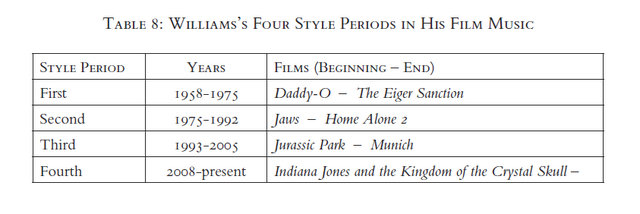
To justify this, I looked to major biographical events, changes in filmmaking techniques, and - the thing that was my focus in writing the chapter - the type of structure he used in writing the main theme of each film (which well supports these divisions).
I go into plenty of detail in the actual chapter, which you can access here in case you're interested:
https://www.academia.edu/37265666/The_Use_of_Variation_in_John_Williamss_Film_Music_Themes
- GerateWohl, Ricard, SteveMc and 3 others
-
 6
6
-
@BrotherSound Thank you for this.
So what does it mean that Part 1 of some titles are missing here?
-
@InTheCity Thank you so much for pointing all this out. This really is invaluable information and I'm looking into it right away! Thank you again.
-
16 hours ago, InTheCity said:
So I guess thats a no, well you are still treading on "his good will" without compensating him. I'd be careful legally
The avoidance of this issue is all clarified in the course description. The Lesson 1 preview on the website demonstrates how this is all put together.
On 4/5/2021 at 7:04 AM, Ludwig said:Please Note:
To avoid copyright infringement, this course contains no score excerpts or audio from John Williams' film scores. Students are directed to find and listen to soundtrack excerpts while the course content consists of:
1. Music theory connecting the techniques to be discussed
2. Analysis describing the techniques behind Williams excerpts
3. Composition tutorials applying the techniques to original compositions, and
4. Composition exercises comprising abstract scales, chords, and original music
-
- Popular Post
- Popular Post
On 4/19/2021 at 12:41 PM, InTheCity said:just curious if you pay any royalty to the maestro for using his (or the studio's) IP to make yourself $$?
Scores and audio are absent. I direct students to the name and timestamps of the appropriate track on the soundtrack, then my analysis of a cue goes into the techniques and how they're used. So you get portions of cues transformed through analysis in order to demonstrate the technique. You'll see what I mean if you watch the preview on the course page of my site.
On 4/19/2021 at 7:37 AM, filmmusic said:I just managed to watch the lesson 1 preview!
It seems really interesting @Ludwig.
I haven't ever enrolled in an online course.
How is it done?
Do i get a download link of your videos and I save it to my computer to watch whenever I like and how many times I like?
Sorry if it's a silly question.
Not silly at all! The way it works is that the course videos are all stored online and I link to them so they're streamed directly on my site. Streaming only right now, no downloads. And yes, once you enroll, you're enrolled for life! So watch as many times as you like!
The flow of lessons generally goes:
Theory --> Analysis --> Composition Tutorial --> Composition Exercises
I'm happy to answer any other questions about the course here.
Also, here's a link to an audio sample from a composer who's already taken the course and wrote music from what he learned in it:
https://vi-control.net/community/threads/john-williams-course-lessons-1-3.108008/post-4807211
I thought it was great!
- filmmusic, Jurassic Shark and Falstaft
-
 2
2
-
 1
1
-
- Popular Post
- Popular Post
I am excited to announce Film Music Notes' very first online course, Action-Music Harmony in Classic Blockbuster Films. To see what's in the course, watch the video below and find out more on the course page, where you can view lesson contents, watch a lesson preview, and enroll in the course!
Please Note:
To avoid copyright infringement, this course contains no score excerpts or audio from film scores. Students are directed to find and listen to soundtrack excerpts while the course content consists of:
1. Music theory connecting the techniques to be discussed
2. Analysis describing the techniques behind Williams excerpts
3. Composition tutorials applying the techniques to original compositions, and
4. Composition exercises comprising abstract scales, chords, and original music
-
2 minutes ago, crumbs said:
This makes sense. I'm sure I'd seen Approaching the Emperor on a list somewhere, though it's absent from the partial cue list thread and Falstaff's breakdown (likely because it was the same cue renamed from Emperor to Nursery).
Yes, "Emperor" in the sketch was changed to "Nursery" in a later version. So that one is the same cue, it just got slightly renamed.
-
25 minutes ago, crumbs said:
So if we have Approaching the Emperor #2 from the prototype edit of reel 8, does that mean there was an Approaching the Emperor #1 at some stage? Maybe an early version of the scene in reel 1, later retitled Approaching the Nursery?
An early sketch of the Approaching the Nursery cue was originally titled Approaching the Emperor. So yes, the #2 seems to refer to the Approaching the Throne cue rather than a revision of the same cue.
-
I'd say that in ANH, the figure in the accompaniment that comes in before the theme is based on the Force theme itself, a kind of outline of it that even uses the same notes: A-Bb-D (see the boxes I've drawn in the music below). Williams also transposes the figure so it has a version that ends on G (the tonic) as well, so it doesn't get too repetitive.
It isn't unheard of for Williams to do this in his golden-era Star Wars scores, either. What @Falstaft calls Heroic Descending Tetrachords, which generally ushers in Luke's Theme, is a faster version of the same figure from the B section of the same theme. And in "The Asteroid Field", the entrance of Vader's Theme comes with a triplet figure in the strings that's again a faster version of the same Vader theme.
I know Williams loves classical concert music and knows a good deal of it, but I would probably say that, once the references to any other works have been established beforehand either by a temp track or instructions from the director / music editor etc., that he works by developing the material he already has. And that's what I'd say is probably going on here: basically compress the Force theme's first phrase into fewer notes and allow the theme's big entrance to be led up to by a form of itself. What could be more appropriate?
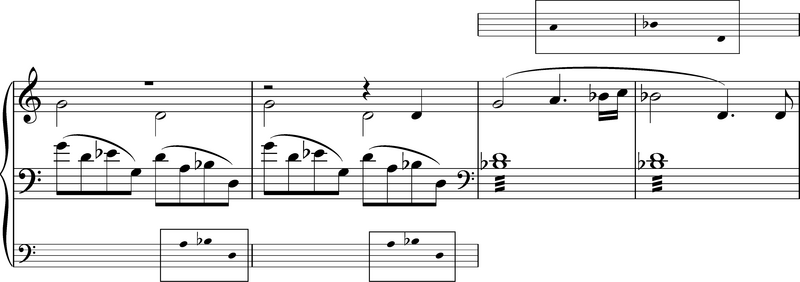
-
2 hours ago, Fabulin said:
It makes neither less nor more sense to me, but if that's our only source, that's our source...
Why so doubtful? They are Matessino's liner notes after all...
-
6 hours ago, Fabulin said:
What was the story with Alfred Newman's fanfare again? Wasn't it Williams who suggested breaking it out of the museum? It wouldn't surprise me if he talked with Lionel about it, and it ended up opening the film because it itself was also (back in the days) inspired by Korngold, and Williams thought it would have enhanced the opening of the film. Maybe Lionel Newman suggested to Williams that there was a similar Fox property written by his brother that could be used in the first place?
The liner notes from the 1997 Special Edition of A New Hope's soundtrack says of Newman's fanfare,
Quoteit was George Lucas' inspired creative stroke to reintroduce it when Fox released Star Wars in 1977.
And I think that makes the most sense. Lucas had already drawn together influences from old serials, samurai films, westerns, and sci-fi, and he knew he wanted the music to be like the old Hollywood scores of the 30s and 40s, so it fits neatly with that whole creative vision.
- Fabulin and Jurassic Shark
-
 1
1
-
 1
1
-
- Popular Post
- Popular Post
11 hours ago, Fabulin said:But since we know that this introductory segment has been written last (the rest steming from The Throne Room), maybe Williams "simply" looked for the best combination of notes common to those melodies, and created the repeated figure based on them?
Ha! I thought you might ask that since we talked about this cue's origins here. Yes, your theory seems likely, I would say, because from what Williams said in that interview you cited here earlier this year, it sounds like he meant that he only had Luke's theme and had to assemble or compose the rest for the main title. So he imported the Throne Room's B section as the main title B section, then probably wrote the opening fanfare at that point as well.
What's really interesting is that the fanfare sounds a lot like the Rozsa Ivanhoe opening that was used for the temp of the main title in its orchestration and harmony in 4ths. But Rozsa's fanfare doesn't have the 4-note motive. So if Williams wrote the fanfare as one of the last things in the score, he must have fashioned it to be close in structure to Luke's theme while having the general sound of Rozsa's.
That's what I find so ingenious is Williams' ability to forge a main title from no fewer than three separate sources either as temp (Ivanhoe) or pre-composed themes (Luke's and Throne Room) and make it sound as though the separate pieces were composed to go together in the first place and that they grow naturally out of what starts it all.
11 hours ago, Fabulin said:Do you have any other examples (namesdropping would be enough) that display such unity and achieve such a stellar effect?
We all know that Williams loves variation as a compositional device, but another example where it's worked out to sound so organic? No, this main title is just spectacular that way.
- Fabulin, Falstaft and BrotherSound
-
 3
3


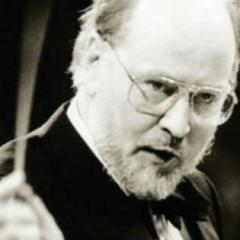
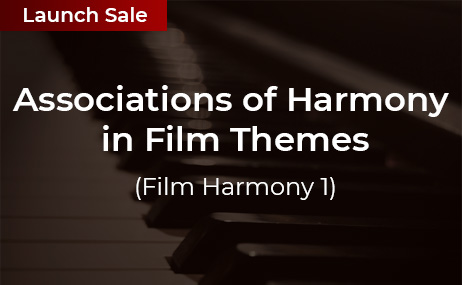

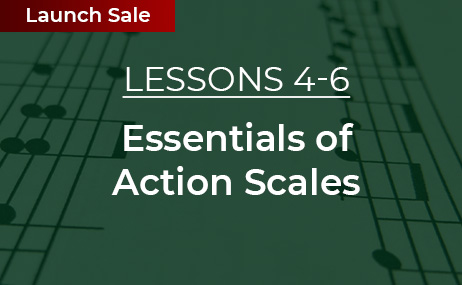
Scherzo For Motorcycle and Orchestra (revised)
in JOHN WILLIAMS
Posted
I love this. Really gives you a clear picture of the overall tonal structure at a glance. And I think even for those unfamiliar with the notation, it still shows one big difference between film cues (even with a solid internal structure like this one) and typical Romantic-era concert works: ending in a different key from the one started with (and stayed with most of the way through). I think If this were simply a film cue imported unaltered into the concert hall, it wouldn't be a very interesting observation. But the fact that Williams has revised it somewhat makes it much more interesting.
By the way, @Falstaft has already said something about this in his full article, where he states that:
The thing I'm wondering is whether, with these 2nd-round revisions, Williams may be trying to smooth out some of the changes in key, or at least give a little more time in preparing for them so they sound even more like a concert piece rather than an imported film cue.
It just seems that Williams has been trying to establish his legacy in the concert hall as much as he can in recent years, even in seemingly smaller ways like this.